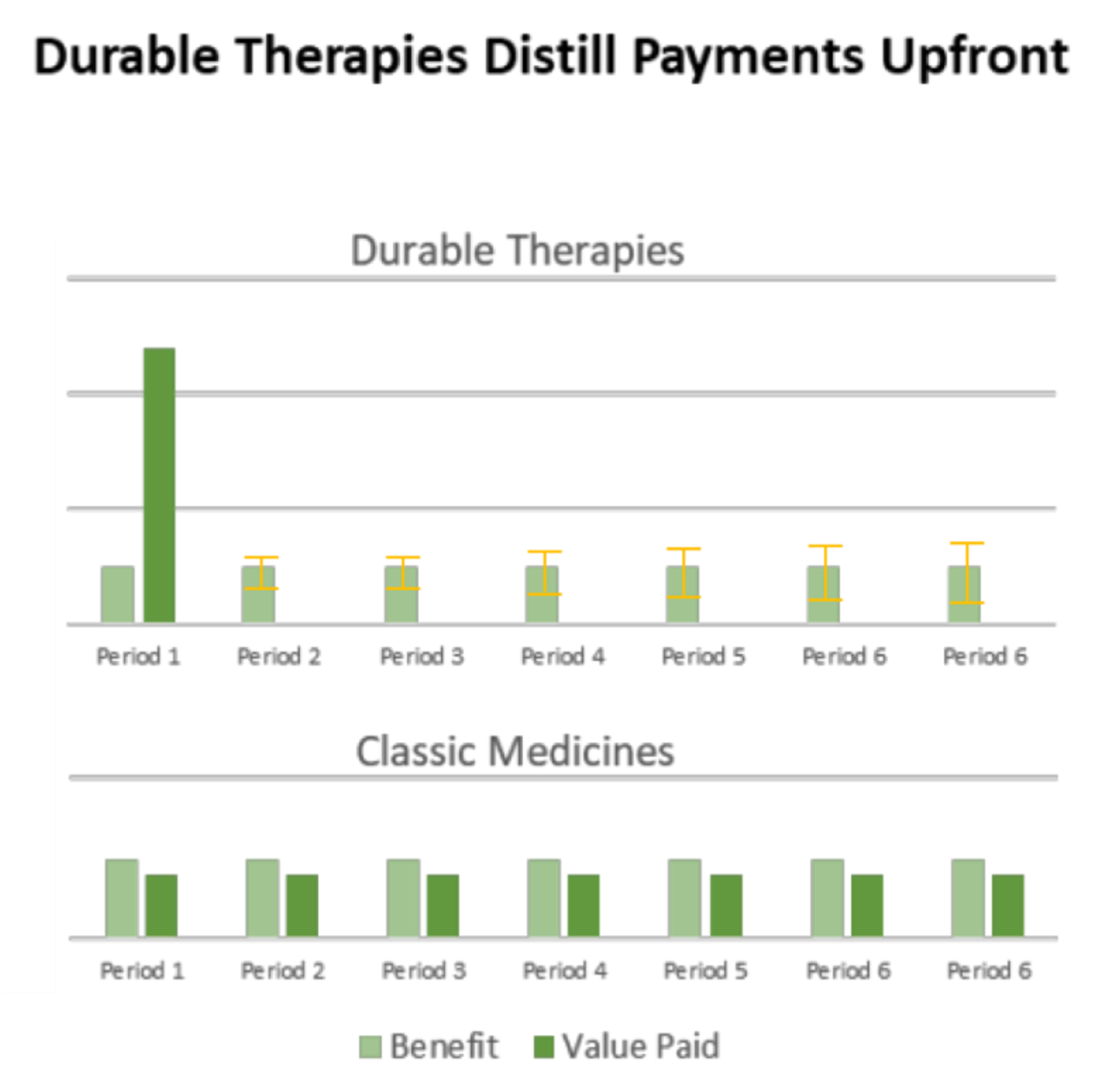Cell and gene therapies (CGT) vs chronic therapies
Durable cell and gene therapy products are different from traditional treatments in duration of benefit and payment timing, causing a disruption in the traditional payment paradigm.

Figure 1: Comparison of payment paradigms for durable and chronic therapies
Payment up-front is required of payers, while patients receiving a cell or gene therapy may benefit for a long time after the treatment. Chronic treatment reimbursement traditionally happens in parallel with treatment delivery and benefits. In many ways, the use of durable therapies is a shift from a model of short-term ‘renting’ treatments to one of ‘buying’ long-term health improvements.
Paying for the full value of the treatment upfront creates several challenges, resulting from:
- Payer reservations about real-world benefits (about the benefits in a broader, real-world population and the duration of those benefits given limited clinical trial data for this new area of science);
- Potential disconnects between who pays and who benefits (as patients could change insurance plans over time after they have received treatment); and
- Difficulties in paying for the full value of the treatment upfront (particularly for smaller payers for whom patients may be infrequent and who may have a smaller population base over which to spread the higher upfront treatment costs).